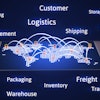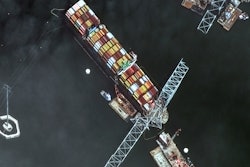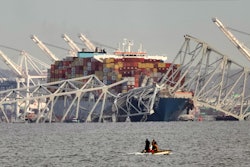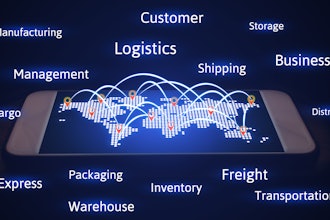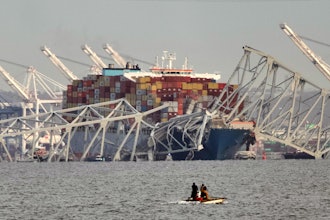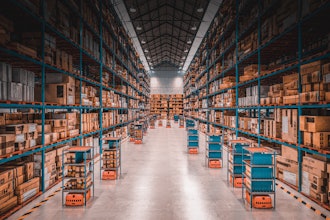Industrial Distribution talks with companies about supply chain management issues manufacturers are dealing with and implementing new platform solutions to address those concerns in this 2-part Q&A round table discussion.
Part 2 can be read here.
Industrial Distribution: What are some of the top supply chain issues customers are dealing with today?
Prashant Bhatia, Vice President of Industry Strategies, JDA Software: Top supply chain issues facing manufacturers today are a result of the globalization of supply networks and the associated volatility, complexity and risk. Global supply chains are faced with volatility relative to raw materials, energy and commodities, compounded with a lack of understanding of where demand is coming from.
Other factors affecting global supply chains are added complexity and cost. As B2B and B2C customers expect more from their suppliers at a faster pace and for less cost, highly unpredictable demand has caused manufacturers to respond to smaller, more frequent orders, driving up costs for safety stock, labor and transportation.
Supply chain risk, which is a factor in any supply chain, becomes exponentially greater on a global scale. Supply chain risks encompass everything from natural disasters to labor strikes, all of which result in longer lead times, increased need for safety stock, and a dependency on a risk mitigation plan and a nimble supply chain to address unplanned events.
Dan Radunz, Senior Vice President of Product Strategy and Development, HighJump: There are many, but they generally boil down to the challenge of increasing efficiency while decreasing inventory carrying costs, and at the same time being responsive to fast-changing market and customer demands. Specifically, this means:
a. Optimizing inventory: Using the supply chain as the linchpin that lets companies cut costs, satisfy customers and improve efficiencies.
b. Supply chain visibility: Making sure you know the what, where and when of your inventory to ensure rapid and efficient replenishment. This may mean global visibility that goes beyond the four walls of a facility to each node of the supply chain, including the warehouse and manufacturing facilities, in transit and at reseller locations.
c. Aligning the supply chain with business objectives: Understanding how the supply chain aligns with the larger business strategy and then aligning those two components accordingly.
d. Long-term forecasting and demand planning: Ensuring supply chain responsiveness while containing costs can mean the difference between a strong bottom line and a weak one.
e. Talent: As experienced supply chain managers retire and organizations scale up to meet growing demand in developing markets, talent acquisition, training, and development is becoming increasingly important.
Adam Kline, Product Management Director, Manhattan Associates: Customer service will always be a concern. How do I meet my customer’s needs while keeping costs in check? Focusing only on service levels without keeping a keen eye on cost will lead to an unsustainable and unprofitable business model. On the flip side, focusing solely on supply chain and logistics costs without consistently meeting SLAs leads to unhappy customers. Supply chain executives have to strike a balance to be successful. Manufacturers, for example, who have historically built and held onto high inventory levels to ensure they can meet customer demand are now looking to streamline their supply chain and adopt a leaner distribution model to strike this balance between logistics costs and customer service.
Technology is ever changing and requires a supply chain executive to ensure they don’t wake up one day to an unsupported infrastructure that cannot scale to meet their needs. Take, for example, a retailer who is expanding into the direct to consumer channel. The underlying systems, whether it is distribution management, transportation management, order management, etc., had better be able to scale up as online sales increase.
Supply chain management is no longer solely about cutting out cost. Rather, customers are looking to drive differentiation through their supply chain practices and even turn their supply chain into a revenue generator.
ID: How difficult/costly/time-consuming is it to implement a platform to address these issues?
Bhatia: Manufacturers can adopt a crawl-walk-run approach when investing in supply chain solutions. To begin, manufacturers should identify the most prevalent business challenges impacting efficiency and growth. Is it an inability to optimally plan transportation or labor, a lack of inventory visibility throughout the enterprise, or maybe difficulties in accurately forecasting demand? Based on that assessment, solutions for transportation management, workforce management, warehouse management, or supply chain planning and demand can be prioritized to create the most significant impact on the business and in the shortest time-frame possible.
Radunz: Companies are increasingly viewing their supply chain as the strategic asset that it is, and employing it as a competitive weapon. Therefore, many CIOs of such organizations are looking to upgrade their legacy supply chain systems.
Implementing new systems can be a lengthy and costly process, so whichever partner you choose should be able to satisfy your demands and business needs now AND grow with your business over time: Start by developing a clear understanding of your business processes, including orders, physical handling, inventory flow, and data flow. Conduct a process and business engineering review, eliminate non-value-added steps, and automate where appropriate.
When working with a software vendor, concentrate on what your business needs, not how to fit your business to their software product. This way, you can create an ideal solution based on your functional needs now and what is down the road.
Keep in mind that initial costs are not the complete story. Here are some additional factors and questions when evaluating total cost of ownership:
- Are you forced to go to the technology provider to make business process changes?
- What is the typical cost of the upgrade? Are vendor consultants required?
- How are source code modification managed through the upgrade process?
Companies may also want to consider a cloud-based solution, such as a warehouse management system in the cloud. This will make up-front costs much lower.
Kline: There is no such thing as a one size fits all approach to solving supply chain problems. The nuances found from industry to industry and even customer to customer require flexibility and agility in a solution. Factors such as industry served, number and type of customer, level of automation, complexity of operational flow, etc… all play a part in defining the scope of a project.
ID: What are some of challenges a company can expect when implementing a supply chain platform solution?
Bhatia: One of the most important areas to focus on for successful supply chain projects is change management. No matter the job function, technology end-users are accustomed to performing their jobs a specific way. As the most effective supply chain solutions automate best practices - not necessarily current practices - adjusting to the new way of doing things can be difficult. Therefore, it is essential for manufacturers to adopt proven change management strategies, as well as advocating executive-level sponsorship, throughout the project’s duration. Successful supply chain implementations are not just dependent on the software, but the people that interact with those tools and the individuals that enable process improvement.
Radunz: There may be so many issues and areas to address that it can feel overwhelming. In short: Don’t try to eat the elephant all at once! Take bite-sized pieces that allow for accomplishments and progress. Get input and buy-in from all stakeholders and management to help drive the changes.
Kline: Change management is a key factor. If a company is moving from a purely manual, paper based warehousing system, for example, to a system driven model where associates use RF guns and/or voice to direct their work, managing that change appropriately is key. Offering adequate training and getting buy in from not only management, but also key members of the labor pool is important.
Part 2 can be read here.


